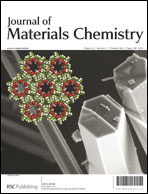Excess electron compounds have been proposed to be novel candidates of high-performance nonlinear optical (NLO) materials because of their large static first hyperpolarizabilities (β0). To enhance the stability of an unstable excess electron compound (LiCN⋯Li) with an extremely large β0 value (310196 a.u.), we designed a boron nitride nanotube (BNNT) as a protective shield molecule to encapsulate it (in theory). The stability of LiCN⋯Li was enhanced: the vertical ionization potentials (VIP) of LiCN⋯Li increased after encapsulating. Therefore, by comparison with LiCN⋯Li, the encapsulated complexes are more difficult to oxidize. Significantly, the BNNT encapsulated LiCN⋯Li complex exhibits a considerable β0 value (10645 a.u.), which is significantly (almost 380 times) larger than 28 a.u. of BNNT. Our further investigations into the intrinsic hyperpolarizabilites (βint) of these compounds show that there are clearly dependencies of the NLO response on the transition energy. Furthermore, it is easy to encapsulate LiCN⋯Li from the B-rich edge rather than N-rich edge of BNNT due to the lower energy barrier, which makes our calculations more useful to experimentalists who may try to synthesize these compounds. Knowledge of the encapsulation process of LiCN⋯Li within BNNT provides a new strategy for the design and synthesis of stable high-performance NLO materials.

You have access to this article
 Please wait while we load your content...
Something went wrong. Try again?
Please wait while we load your content...
Something went wrong. Try again?


 Please wait while we load your content...
Please wait while we load your content...